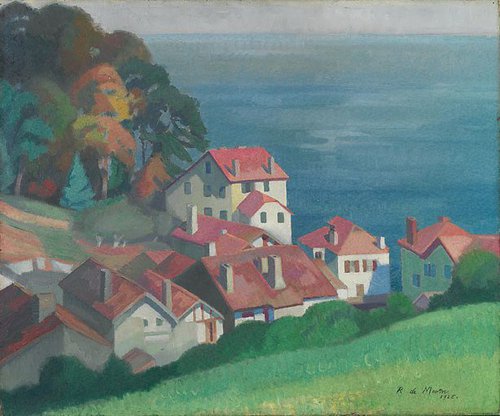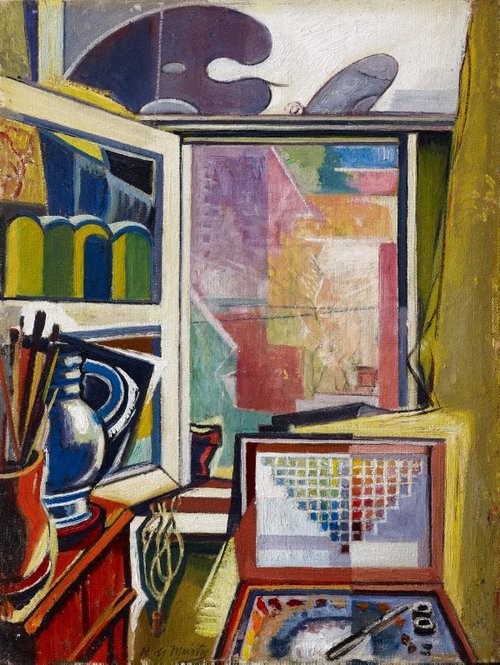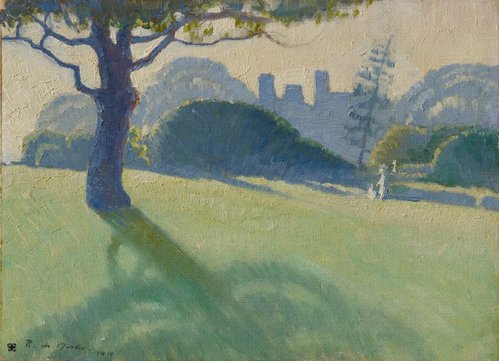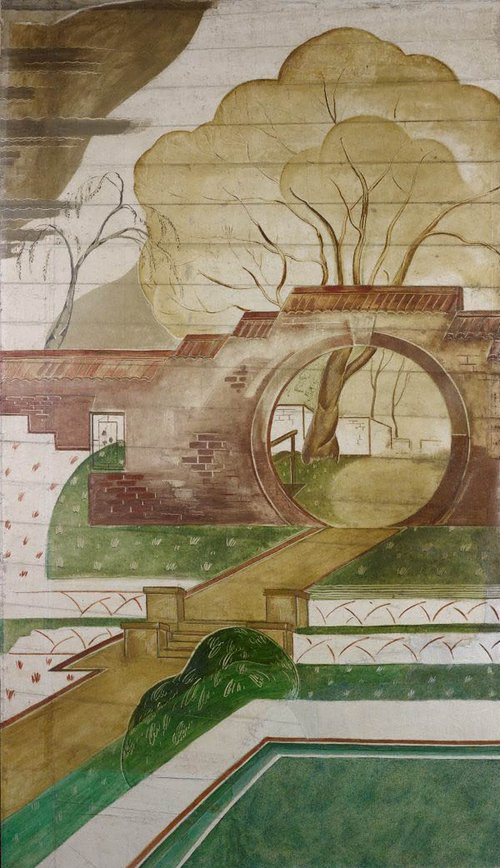Title
The de Mestre Colour Harmonising Chart
1924
sold from 1926
Artist
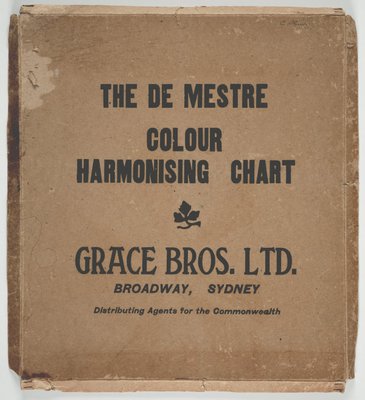
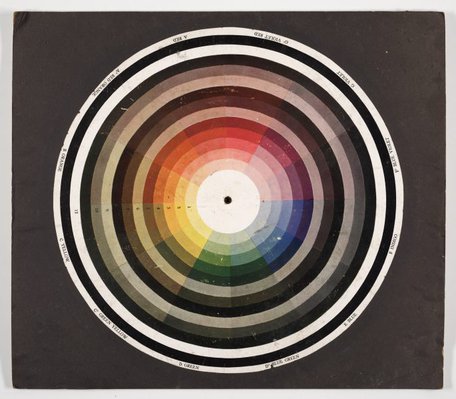


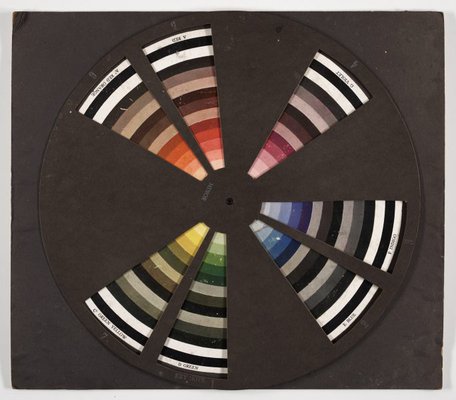
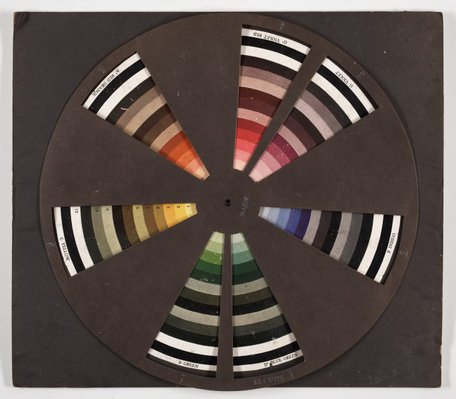
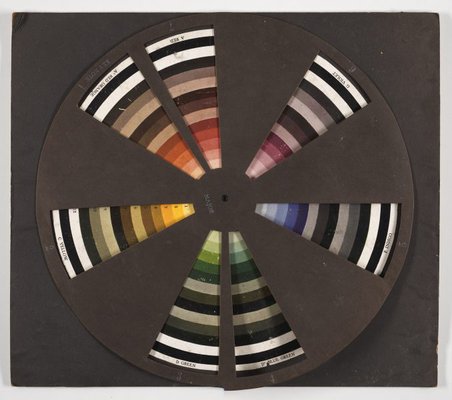
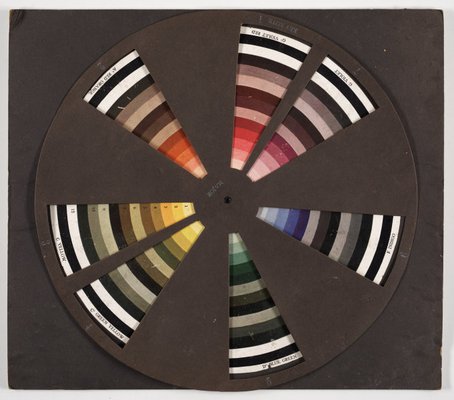
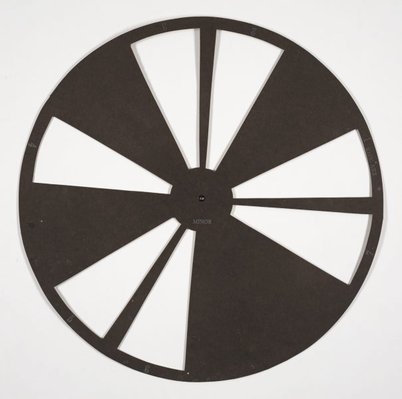
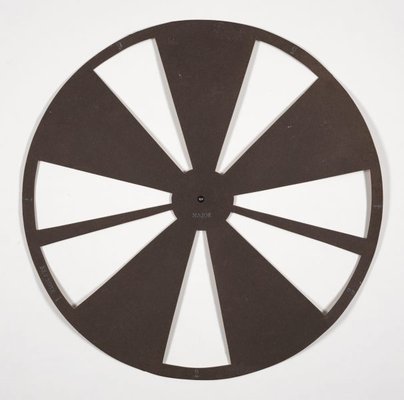
-
Details
- Dates
- 1924
sold from 1926 - Media categories
- Print , Mixed media
- Materials used
- commercially printed colour disc with 'major' and 'minor' masks, instructions in cardboard box
- Dimensions
- 47.5 x 54.0 cm
- Signature & date
Not signed. Not dated.
- Credit
- Presented in memory of Cecily Gunz, 2013, who used The Harmonising Chart for her furniture and colour design work
- Location
- Not on display
- Accession number
- 293.2013.a-d
- Copyright
- © Estate of Roy de Maistre
- Artist information
-
 Roy de Maistre
Roy de Maistre
Works in the collection
- Share
-
-
About
In 1919 Roy de Maistre and Roland Wakelin mounted the 'Colour in art' exhibition as a manifesto of the new colour expression in painting. The artists explored principles of colour harmony, pairing the hues of the colour spectrum with notes of the musical scale, propelling their work further towards dimensions of abstraction.
In a section of this exhibition titled 'Colour organisation in interior decoration' de Maistre exhibited a series of painted colour keyboards, discs and scales to demonstrate how the same principles of colour harmony that were used for artistic creation, could be applied to everyday life and interior design.
De Maistre interest in colour-music correspondences had commenced by 1917 when he worked with Dr Charles Gordon Moffit on colour schemes for rooms for shell shocked soldiers. Maintaining this earlier preoccupation with aligning well being and colour, de Maistre developed his 1919 colour-music system into 'The de Mestre Colour Harmonising Chart' which he patented in 1924 and sold through Grace Bros Department Store from 1926. The chart determined colour schemes by using a keynote colour, that with the aid of 'major' and 'minor' masks that were placed over a colour chart, shaped a chromatic palette or 'scale' of complementary and contrasting hues. It was promoted as a pragmatic 'new and scientific device for producing colour schemes' for dress, furniture and interior design.
'The Harmonising Chart' proved influential when first produced, and was adopted as a colour guide by interior designers. Artist-designer Thea Proctor for example used the chart as a didactic tool at her Sydney design school, influencing a generation of interior designers to develop bold colour schemes as a means of creating a modern and healthy ambience for the home.
Following the ideals of the Bauhaus and philosophies of British modernists such as Roger Fry, 'The de Mestre Colour Harmonishing Chart' evidences a period of Sydney modernism where artists sought to instil the values of abstract aesthetics in daily life by doubling as decorators. It is also the product of a period when colour chromatism was informing the bourgeoning movements of Australian modernism.
-
Exhibition history
Shown in 1 exhibition
Sydney Moderns, Art Gallery of New South Wales, Sydney, 06 Jul 2013–07 Oct 2013
-
Bibliography
Referenced in 5 publications
-
Elizabeth Gertsakis, Sydney moderns: art for a new world, 'Roy de Maistre: colour-music and the Verbrugghens', pg. 46-49, Sydney, 2013, 46, 48 (colour illus.), 72 (colour illus.), 73, 312.
-
Heather Johnson, Modern times: the untold story of modernism in Australia, 'Modern rooms', pg. 22-29, Sydney, 2008, 26 (colour illus.).
-
Heather Johnson, Roy de Maistre: The english years, 'Colour/music', pg. 84-102, New South Wales, 1995, 84.
-
Heather Johnson, Roy de Maistre; The Australian years 1894-1930, 'Colour music 1919', pg. 29-38, 1988, 30, 31, 32 (colour illus.). plate no. 6
-
Denise Mimmocchi, Look, 'New to the collection: building up our holding of Sydney moderns', pg. 15-17, Sydney, Dec 2014-Jan 2015, 16, 17.
-

